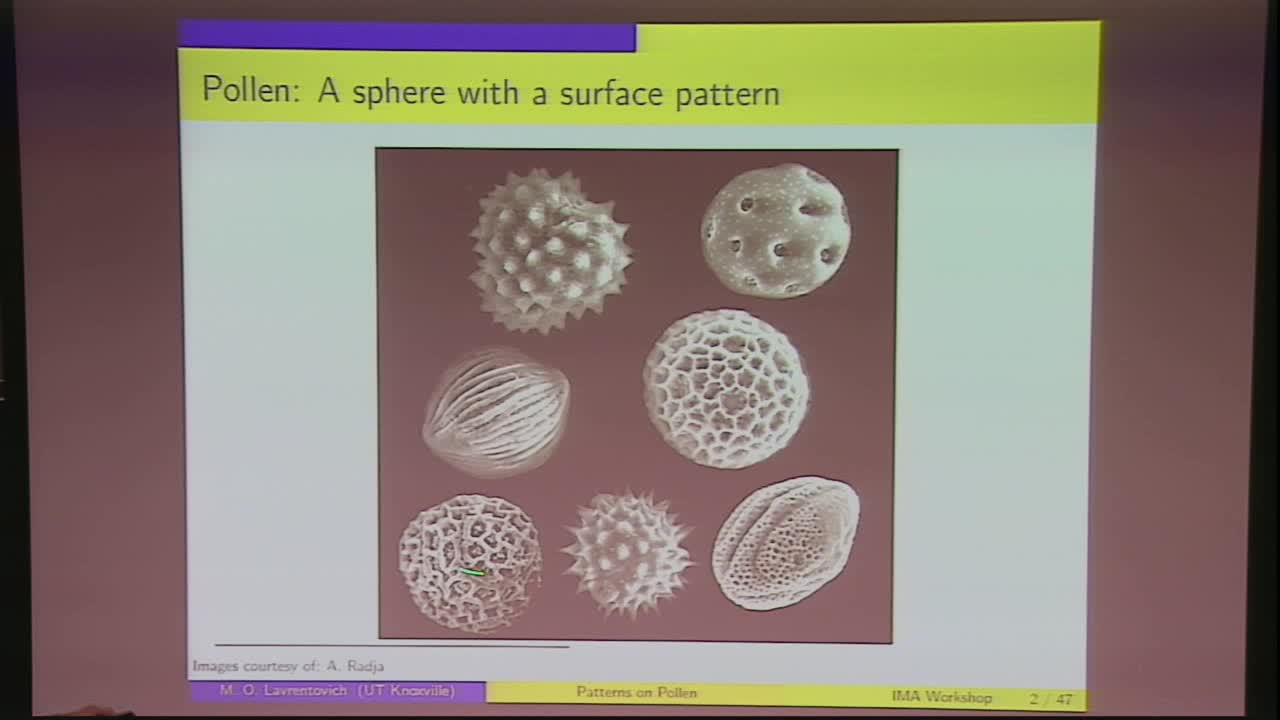Pattern Development in Pollen Grains
Presenter
January 18, 2018
Keywords:
- pollen, pattern formation, phase transitions
Abstract
Plant pollen are cells which exhibit a plethora of surface patterns, including stripes, hexagons, "foam-like" ridges, and arrangements of spikes. The spherical shape of the cells ensures that these various patterns have defects. We study the development of these patterns and conjecture that the diversity of the observed patterns, and their reproducibility within a single species, may be explained by a first-order phase transition from an unpatterned to a patterned state. A key feature of this transition is the presence of a characteristic wavelength, which we conjecture arises because of a coupling between the pollen's plasma membrane and a phase-separating soft material secreted to the pollen surface. We develop a phase diagram for the observed patterns and comment on both the equilibrium patterns and the pattern formation. Finally, we discuss how the patterns vary among species and the evolutionary implications of our modeling. Interestingly, the evolutionary analysis suggests that pollen grains are more commonly not decorated with the equilibrium patterns.
